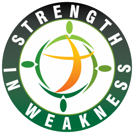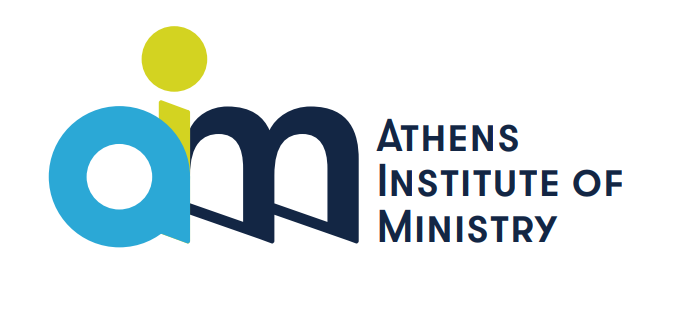Critical theory is an academic discipline that grew out of Marxism. In the mid-1800s, Karl Marx argued that all of history had been one long economic class struggle between oppressed and oppressor groups. The oppressed, or proletariat, labored to produce goods, while the oppressors, or bourgeoisie, controlled the means of production. Oppression, in this view, was the result of problematic social structures. As such, the only way the oppressed could be liberated was for them to gain a consciousness of their social location and overthrow the system in a revolution. The goal of these revolutionaries would be to create a new political order based on a socialist-defined notion of equality: equal outcome for all. Not equal opportunity for all—equal outcome for all.
Fast-forward to the 1930s. Intellectuals at the Frankfurt School in Germany took Marx’s binary way of looking at the world through oppressor and oppressed categories and began extending it beyond economics. In the decades that followed, this framework was applied by various thinkers to race, gender, sexuality, and several other identity markers. Like the working class in Marx’s analysis, people of color, women, and those in the LGBTQ community were identified as victims of social structures that kept them oppressed by those in power. They were considered oppressed because dominant groups were imposing their norms, values, and expectations on them.
The end result of this neo-Marxist analysis is a “social binary” in which everyone fits into one of two groups—oppressor or oppressed—based on each of their identity markers. Any given individual may fall into both oppressor and oppressed groups, depending on their unique mix of identity characteristics. For example, I am a white, heterosexual woman. That means I’m oppressed in terms of my gender, but I’m an oppressor in terms of my race and sexuality. Furthermore, people experience distinct forms of oppression based on their specific mix of memberships in oppressed groups (the interaction of these oppressions is called intersectionality). According to this view, a black trans woman experiences oppression at a different level and in a different way than someone like me, who is only oppressed in terms of gender but not race or sexuality.
It’s important to understand that from the critical theory perspective, individuals don’t have to experience anything in particular to be considered oppressed, nor do individuals have to do anything in particular to be considered oppressors. The oppressed-oppressor binary is a social group phenomenon based on presumed power dynamics in society. For example, in their book Is Everyone Really Equal?, critical theory scholars and advocates Özlem Sensoy and Robin DiAngelo write:
To oppress is to hold down—to press—and deny a social group full access and potential in a given society. Oppression describes a set of policies, practices, traditions, norms, definitions, and explanations (discourses), which function to systematically exploit one social group to the benefit of another social group…Oppression occurs when one group is able to enforce its prejudice and discrimination throughout society because it controls the institutions. Oppression occurs at the group or macro level, and goes well beyond individuals. Sexism, racism, classism, ableism, and heterosexism are specific forms of oppression.
From our discussion thus far, we can now identify the specific nature of the difference between biblical justice and critical theory–based justice: In critical theory, the standard for identifying where the injustice of oppression lies is the dividing line of the social binary. In other words, identity groups that hold the power in society (the oppressors) are, by definition, perpetrators of injustice, and identity groups with less power (the oppressed) are, by definition, victims of injustice. But [the] only accurate standard for identifying justice and injustice is God’s standard. God’s standard isn’t based on who does or doesn’t hold power in society; it’s based on His perfect moral character.
The result of this discrepancy in standards is that secular social justice advocates are often working to right injustices that aren’t truly injustices because they’ve started with the false standard of a neo-Marxist social binary. And when Christians work for social outcomes in conflict with those deemed “just” according to critical theory, we’re despised for our “oppressive” views.
It’s helpful to see some tangible examples of how this plays out, so let’s now look at two culturally high-profile branches of critical theory: critical race theory and queer theory.
Example 1: Critical Race Theory
Critical race theory (CRT) is the branch of critical theory that deals specifically with race-based oppression in society. According to CRT, white people are the oppressors and people of color are the oppressed; white people use their social privilege and power to impose whitenesson everyone else. Note that whiteness isn’t about skin color, as the word might initially suggest. Rather, it’s about the culture white people (problematically) impose on everyone else. The Smithsonian National Museum of African American History and Culture puts it this way:
White dominant culture, or whiteness, refers to the ways white people and their traditions, attitudes and ways of life have been normalized over time and are now considered standard practices in the United States. And since white people still hold most of the institutional power in America, we have all internalized some aspects of white culture—including people of color.
This definition comes from a graphic titled “Aspects and Assumptions of Whiteness in the United States.” The graphic offers dozens of alleged examples of whiteness, including things like believing the nuclear family is the ideal social unit, rational thinking, the primacy of the Judeo-Christian tradition, Christianity being the norm, holidays based on “Christian religions,” the belief that hard work is the key to success, respect for authority, being polite, and a preference for bland foods like steak and potatoes.
So much could be said about the examples on this list and on the chart more broadly, but for our current purpose, we’ll stick with a single point. Many examples of presumably problematic whiteness are not actually problematic. Therein lies the issue. Critical theory starts from a belief that it’s inherently unjust for a dominant group to impose its norms, values, and expectations on minority groups but never considers whether those norms, values, and expectations might be objectively good. It simply problematizes whatever is associated with the social group that holds the power. But what if, for example, God’s ideal social unit is the nuclear family? That would make such a belief an accurate understanding of reality whether it’s held by a dominant social group or not.
Contrary to critical theory’s most basic assumptions, norms, values, and expectations are objectively good or bad regardless of who holds them. From a biblical perspective, racial injustice cannot be identified by the dividing line of CRT’s social binary because no group is an oppressor or guilty of sin due solely to their skin color. People are guilty when they transgress God’s moral law—full stop. It doesn’t matter what their skin color is.
While this likely makes intuitive—as well as biblical—sense to most readers, it’s a view that’s disdained by those holding to CRT. Why? From the perspective of critical race theorists, Christians who reject CRT-based categories of justice aren’t merely wrong in their views, they’re complicit in turning a blind eye to what critical race proponents believe is evil racial oppression. You’ll be met with grave moral indignation if you suggest that norms, values, and expectations can be evaluated on their own objective merits rather than as a function of group power dynamics. In fact, on the Smithsonian’s graphic, objective thinking is listed as a trait of whiteness.
Furthermore, the resented concept of whiteness is closely associated with Christianity itself because America’s predominantly white European heritage was also predominantly Christian. Ironically, this means that many (not all!) of the norms, values, and expectations associated with white people in America are objectively good because they originated from a Christian worldview…yet they’re seen as oppressive because they happen to be associated with America’s racially dominant group. For example, the nuclear family is part of God’s objective design for human flourishing and has historically been an American norm given America’s Christian heritage. However, CRT-based activists see the nuclear family as something to abolish because of its association with whiteness. Activists acknowledge this quite directly. As one put it, “There’s no greater source of systematic oppression than the nuclear family. The nuclear family is associated with whiteness. And whiteness is associated with racism, bigotry, transphobia, and white supremacy.” If you search online for “Christianity and whiteness,” you’ll find numerous discussions of the supposed connection.
Through the eyes of activists, then, Christians who reject CRT are guilty of upholding and defending racial injustice and are promoters of problematic “whiteness.” But when we stand in the way of those working to tear down norms, values, and expectations that we know to be objectively good—for example, advocating for the common good by fighting for the protection of the nuclear family—we’re actually doing what’s right. And that’s true justice.
Example 2: Queer Theory
Queer theory is the branch of critical theory that deals with gender identity and sexual oppression in society. According to queer theory, cisgender and heterosexual people are the oppressors and those in the LGBTQ community are the oppressed (cisgender refers to people whose gender identity corresponds with their biological sex). Whereas in CRT, oppressors impose whiteness on the oppressed, in queer theory, oppressors impose cisheteronormativity on the oppressed.
Cisheteronormativity refers to the idea that groups in power have arbitrarily made being cisgender and heterosexual the norms in society, thereby oppressing those who deviate from the norms. In other words, queer theorists claim that categories of gender (male and female) and sexuality (heterosexual and homosexual) are merely social constructs—ideas created by society rather than ideas reflecting any essential truth independent of society’s beliefs. Anything heralded as a “normal” identity is therefore oppressive to those who have a different way of “being.” To be queer, then, is to resist these normative power structures. As queer theorist David Halperin explains, “Queer is…whatever is at odds with the normal, the legitimate, the dominant. There is nothing in particular to which it necessarily refers. It is an identity without an essence.” Queer theory activists ultimately seek to rid society of its “oppressive” gender binary.
For those new to the subject, I realize this may sound like an obscure academic philosophy that could never leave the ivory tower. After all, it’s quite hard for most of us to imagine a society that no longer acknowledges the existence of men and women in everyday life. But not only has this philosophy escaped the ivory tower, it’s been adopted in K-12 schools nationwide. The public education system is just one of many places queer theory can be found, but it’s an important one to know about given its influence on the next generation. Queer theory has infiltrated the educational system through supportive school district policies, formal teacher training, and gender and sexuality clubs established in more than 4,000 schools. The narrative is always the same: The gender binary has created an unjust society and we must now do the work of dismantling the cisheteronormativity that oppresses gender and sexual minorities. In practice, that can include anything from promoting a linguistic revolution (for example, calling men “people with a penis” and women “people with a vulva”) to facilitating student gender transitions without parental consent, to encouraging boundless sexual experimentation…all in the name of justice.
But just as the false standard of the social binary incorrectly identifies racial oppression, the false standard of the social binary incorrectly identifies gender and sexual oppression. It’s not oppressive for society to have norms around gender and sexuality if those norms reflect God’s design for humanity. And Scripture is clear that both the gender binary and heterosexual marital unions are indeed God’s design. Genesis 1:27 states, “God created man in his own image, in the image of God he created him; male and female he created them.” Males and females are to come together in the unity of marriage and join as “one flesh” (Genesis 2:23–24; Matthew 19:3–6; Ephesians 5:28–32). And the Bible repeatedly condemns sexual behavior outside of marriage between a man and a woman (for example, Romans 1:26–27; 1 Corinthians 6:9–10; 7:2–5; Hebrews 13:4). Just as we saw with CRT, what’s normal or socially dominant isn’t necessarily bad. It might or might not be. In the case of gender and sexuality, however, the norms against which secular social justice activists rail are part of God’s objectively good design.
Once again, we find that in the eyes of culture, Christians are guilty of upholding oppressive norms that perpetuate injustice and harm. But if we work to tear down gender and sexuality norms in the name of justice, we’re actually working against what God Himself wants for humanity. Our love for God and our love for others should lead us to actively work against queer theory’s manifestations in culture because falsehoods about gender and sexuality are what truly cause harm.
— Natasha Crain is a speaker, podcaster, and author of five books who equips Christians to think more clearly about holding to a biblical worldview in an increasingly challenging secular culture. She has been featured on radio and TV shows across the US and Canada. Connect with her at natashacrain.com.
Image by Bruce Emmerling from Pixabay
---
Excerpted from When Culture Hates You: Persevering for the Common Good as Christians in a Hostile Public Square, by Natasha Crain (Harvest House, 2025). Used by permission.










